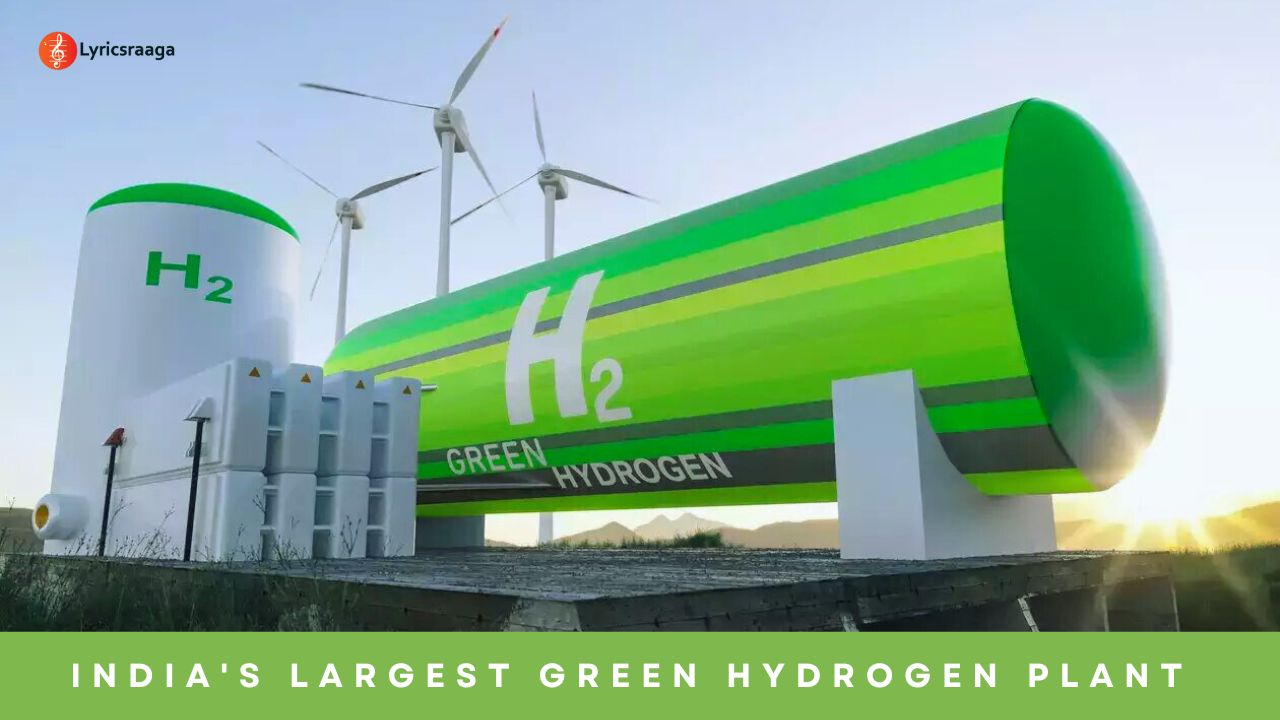India’s Largest Green Hydrogen Plant
India’s Largest Green Hydrogen Plant: In a significant move towards promoting green energy and contributing to India’s energy transition, NTPC Limited, India’s largest integrated power company, through its subsidiary NTPC Green Energy Limited (NGEL), has signed a Land Lease Agreement with the Andhra Pradesh Industrial Infrastructure Corporation (APIIC). The agreement, inked on 20th February 2024, paves the way for the development of an “Integrated Green Hydrogen Hub” near Pudimadaka village in Visakhapatnam, Andhra Pradesh.
Covering a sprawling 1,200 acres of land, the Pudimadaka Green Hydrogen Hub is designed to establish a world-class ecosystem for cutting-edge technologies in the new energy paradigm. This includes the manufacturing of electrolyzers and fuel cells, ancillary industries, startup incubation, testing facilities, and the production and export of green hydrogen and its derivatives such as green ammonia and green methanol.
A key component of the project is the construction of India’s largest green hydrogen production facility, boasting a capacity of 1,200 tons per day. This facility will facilitate the conversion of green hydrogen into derivatives, meeting the demands of various export markets. The overarching mission is to position India as the global hub for the production, usage, and export of green hydrogen and its derivatives.

NGEL, a wholly-owned subsidiary of NTPC, has been established to enhance NTPC’s renewable energy portfolio. NGEL will be responsible for Renewable Energy Parks and Projects, including ventures into Green Hydrogen, Energy Storage Technologies, and round-the-clock renewable energy power.
The Land Lease Agreement was formally exchanged between Shri Sivakumar V. V., Chief General Manager of NGEL, and Shri Pravin Kumar, Vice-Chairman & Managing Director of APIIC, at the Secretariat, Government of Andhra Pradesh, Amravati. The ceremony was attended by Chief Secretary Shri K S Jawahar Reddy, Executive Director of NTP, Shri R Sarangapani, and other senior officials.
With a total installed capacity of 74 GW, including joint ventures and subsidiaries, NTPC remains a key player in India’s power generation sector. The Pudimadaka Green Hydrogen Hub, with an estimated investment of INR 65,370 crore, is set to be a game-changer in India’s pursuit of sustainable and clean energy solutions. The project is planned in three phases, with the first phase expected to be operational by 2026 and the final phase completing by 2032, contributing significantly to the nation’s green energy goals.
What are the uses of Hydrogen
Hydrogen is a versatile element with various applications across different industries. Here are some of the common uses of hydrogen:
Energy Production:
Fuel Cells: Hydrogen can be used in fuel cells to generate electricity through a chemical reaction between hydrogen and oxygen. This is a clean and efficient way to produce electricity, with water and heat being the only byproducts.
Combustion: Hydrogen can be burned as a fuel in internal combustion engines, similar to traditional fossil fuels. However, this process doesn’t produce carbon dioxide as a byproduct, making it a cleaner energy option.
Industrial Processes:
Chemical Production: Hydrogen is a key feedstock for various industrial processes, including the production of ammonia, methanol, and other chemicals.
Refining: Hydrogen is used in the refining of fossil fuels, such as in the production of low-sulfur gasoline and diesel.
Transportation:
Hydrogen Vehicles: Hydrogen can be used as a fuel for vehicles, powering hydrogen fuel cell vehicles. These vehicles emit only water vapor and heat as byproducts, making them environmentally friendly.
Metallurgical Processes:
Metal Reduction: Hydrogen is used in the reduction of metals from their ores. For example, it is used in the production of steel.
Electronics:
Semiconductor Industry: Hydrogen is used in the production of semiconductors and other electronic components.
Space Exploration:
Rocket Propulsion: Hydrogen is used as a rocket fuel, often in combination with oxygen, due to its high energy content.
Food Industry:
Hydrogenation: In the food industry, hydrogen is used in processes like hydrogenation to convert liquid oils into solid fats, as in the production of margarine.
Medical Applications:
Hydrogen Peroxide Production: Hydrogen is used in the production of hydrogen peroxide, which has various applications in medicine and industry.
Energy Storage:
Power-to-Gas: Hydrogen can be produced through electrolysis using excess renewable energy and stored for later use, providing a means of energy storage and grid balancing.
Hydrogen is considered a clean energy carrier because its combustion or use in fuel cells produces minimal or no greenhouse gas emissions, depending on the production method. However, the widespread adoption of hydrogen as a clean energy solution requires cost-effective and sustainable methods of production, storage, and transportation.
What is Green hydrogen
“Green hydrogen” refers to hydrogen that is produced using renewable energy sources, such as wind, solar, or hydropower, in a process known as electrolysis. This method involves splitting water (H2O) into hydrogen (H2) and oxygen (O2) using electricity. The electricity used in this process is generated from renewable sources, making the overall production of hydrogen environmentally friendly and sustainable.
Here’s how the process works:
Electrolysis: Water is subjected to electrolysis, a process where an electric current is passed through water to break it into hydrogen and oxygen. The chemical reaction can be represented as 2H2O → 2H2 + O2.
Renewable Energy Source: The electricity used for electrolysis is sourced from renewable energy, such as solar, wind, or hydropower. This ensures that the entire hydrogen production process is powered by clean and sustainable energy, making it “green.”
Green hydrogen is considered a clean energy carrier because it does not produce carbon dioxide (CO2) emissions during its production. In contrast, traditional or “grey” hydrogen is typically produced from natural gas through a process called steam methane reforming (SMR), which releases CO2 as a byproduct, contributing to greenhouse gas emissions.
The use of green hydrogen is gaining attention as a potential solution for decarbonizing various sectors, including industry, transportation, and energy. It is seen as a key player in the global effort to transition to a low-carbon or zero-carbon economy. The development of green hydrogen infrastructure and technology is crucial for harnessing the full environmental benefits of this clean energy source.



